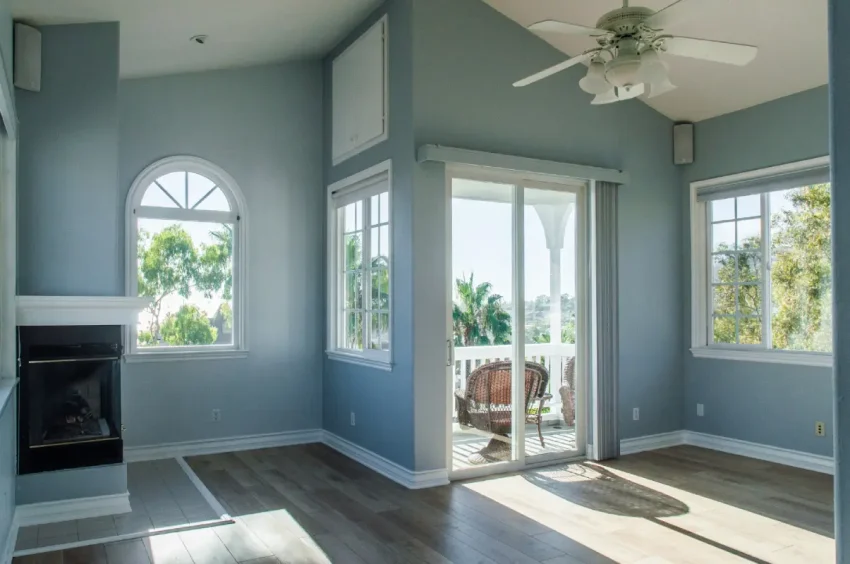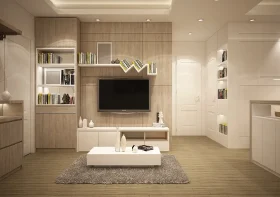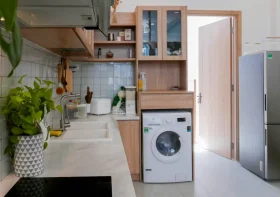Choosing the Right Windows and Doors for Your Home: A Comprehensive Guide

Selecting modern windows and doors is not just a question of style or appearance. While aesthetic harmony is important, the practical factors—such as insulation, sound reduction, ease of use, and security—are even more crucial to daily satisfaction. With today’s advancements in design, manufacturing, and materials, windows and doors can deliver remarkable levels of comfort, reflect your lifestyle, and protect your home against the elements.
Keeping up-to-date with current options and best practices will empower you to make choices that maintain a comfortable indoor environment all year long, regardless of external temperatures or weather conditions.
When considering upgrades or renovations for your home, one of the most impactful choices concerns the windows and doors you install. These elements serve as both functional and aesthetic necessities, significantly influencing curb appeal, comfort, energy efficiency, and even security. The right selections can transform your living space while providing economic benefits over time. Properly chosen and installed windows and doors may require an initial investment.
Still, their contribution to reduced energy bills and increased property value makes this expense a sound, long-term decision. For homeowners seeking enhancements that provide both immediate improvement and lasting savings, focusing on energy-efficient window installations is particularly prudent.
Contents
Types of Windows
Windows are a versatile addition to any home, offering various designs and functionalities. Double-hung windows provide excellent airflow and ventilation control, making cleaning a breeze. Casements and side-hinged windows open outward with a crank, giving unobstructed views and effectively capturing breezes. Bay and bow windows, architectural statement pieces, extend outward from the house, adding extra interior space and abundant daylight. Bay windows feature a large central pane flanked by two smaller panes at an angle, while bow windows create a gentle curve using four or more panes.
Picture windows, designed to maximize views and sunlight, do not open but provide a dramatic panorama of the outdoors, making them ideal for living rooms, stairwells, or areas where scenery is more important than ventilation. Awning windows, hinged at the top, open outward to allow ventilation even during light rain, making them perfect for bathrooms and basements. Sliding windows operate horizontally, offering ease of use and a sleek, modern look that complements contemporary designs.
Garden windows protrude outward, creating a small shelf-like space ideal for plants, herbs, or decorative items. Specialty-shaped windows, such as arches or circles, add a distinctive architectural flair to any room. Combining multiple window styles can enhance a home’s functionality, curb appeal, and natural light.
Types of Doors
The right door can significantly change a room’s atmosphere, security, and energy performance. There are various designs for entry doors, patio doors, and storm doors. Entry doors, made from materials like wood, steel, and fiberglass, balance security and curb appeal. Patio doors connect indoor living spaces to gardens or patios, often featuring large panes of glass.
Storm doors, designed to shield the exterior door from extreme weather, add insulation, ventilation, and prolong the main door’s lifespan. These doors are particularly beneficial in regions with variable climates. Overall, the right door design can significantly impact a room’s atmosphere and performance. Sliding patio doors save space and provide easy access, while French doors add elegance and a classic look.
Fiberglass doors offer excellent durability and resistance to dents, making them a low-maintenance option. Security features like multi-point locking systems can enhance safety without sacrificing style. Additionally, energy-efficient doors with proper weatherstripping help reduce utility bills by minimizing drafts and heat loss.
Materials and Durability
The choice of materials for windows and doors not only influences the appearance of a home but also affects its durability and maintenance needs. Wood is renowned for its warmth, classic beauty, and ability to be stained or painted any color. It requires regular upkeep to protect against moisture, insects, and weather-related issues. Vinyl is popular for its cost-effectiveness and low maintenance, resisting rot, warping, and fading while improving energy efficiency.
Aluminum is valued for its strength, slim profile, and rust resistance, but may be less energy-efficient without a thermal break due to its conductivity. Fiberglass is highly durable, resilient, energy-efficient, and can mimic the look of painted wood, offering both performance and aesthetic flexibility.
Energy Efficiency Considerations
Modern window and door design prioritizes energy efficiency, aiming to reduce drafts, heating/cooling costs, and improve comfort. Key factors include double or triple glazing, low-emissivity coatings, and proper sealing. Double or triple glazing creates a barrier against heat transfer and noise, reducing energy consumption and indoor noise pollution.
Low-emissivity coatings reflect infrared heat while allowing visible light to permeate, keeping interiors cooler in summer and reducing heat loss in winter. Proper sealing prevents moisture and air infiltration, preventing drafts, higher energy costs, and water damage or mold growth.
The Installation Process
Professional installation is crucial for a successful window or door upgrade. It involves assessing existing frames and measuring openings to ensure a precise fit, preventing future issues. Old units are removed carefully to avoid damage and ensure new units fit perfectly. New windows or doors are installed within the prepared opening, leveled, and anchored securely. Flashing and insulation are applied to block out moisture and air infiltration. The craftsmanship of the installation determines the effectiveness of the finished product. Finally, high-quality finishing work, such as interior moldings and exterior trims, enhances appearance and helps maintain energy efficiency.
Maintenance Tips
Regular maintenance is crucial for the longevity of windows and doors. This includes cleaning glass, frames, and hardware with non-abrasive products, conducting thorough seasonal inspections for issues like cracked glass, damaged seals, misaligned tracks, or moisture, and lubricating all moving components as per the manufacturer’s recommendations. This prevents wear, noise, and potential malfunctions, ensuring the longevity of your investment.
Promptly addressing minor problems can prevent costly repairs or premature replacements in the future. Applying protective finishes or sealants, especially on wooden frames, can help shield against weather-related damage. Keeping drainage channels and weep holes clear allows water to escape, reducing the risk of leaks and frame deterioration. For sliding doors and windows, ensuring tracks are debris-free improves smooth operation and prevents roller damage. Partnering with a trusted professional for periodic checkups can further extend the life and performance of your windows and doors.
Cost Considerations
The cost of new windows and doors depends on size, material, design, and installation complexity. Vinyl is the most affordable material, while wood offers a premium appeal at a higher price. Customization, such as nonstandard shapes or unique finishes, can increase costs. Skilled labor is essential for optimal performance and manufacturer warranties, but also includes removal, disposal, frame damage repair, and waterproof installation.
Overall, labor costs contribute to the overall cost. Energy-efficient options, such as double or triple-pane glass with low-E coatings, may carry a higher upfront cost but can significantly reduce heating and cooling expenses over time. Choosing impact-resistant glass or reinforced frames can also raise prices but provides added security and durability.
Regional factors, such as local building codes or climate considerations, can influence both material selection and installation techniques. Larger projects that replace multiple units at once may qualify for bulk discounts, reducing the per-unit price. Homeowners should also consider potential tax credits or rebates for energy-efficient upgrades, which can offset part of the investment.
Delays caused by supply chain issues or custom orders may extend the project timeline and add to costs. Proper maintenance after installation helps protect your investment and extend the lifespan of your windows and doors. Working with a reputable contractor ensures accurate measurements, professional installation, and long-term satisfaction with the finished product.
Choosing the Right Contractor
When upgrading your windows and doors, choosing a reputable contractor with experience, references, and licensing is crucial. Look for installers with a history of successful projects, ask for photos of completed work, and inquire about product expertise. Check online ratings, read reviews, and request references from previous clients to gauge customer satisfaction.
Ensure the contractor is fully licensed and insured to protect against liability, property damage, and substandard workmanship. By making thoughtful decisions and collaborating closely with professionals, you can elevate your comfort, improve curb appeal, and ensure long-term property value.



